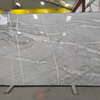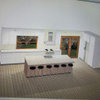Back with Question on Sealing Granite ?
gracie-2006
15 years ago
Related Stories

GREEN DECORATING8 Questions to Help You See Through Green Hype
With the ecofriendly bandwagon picking up some dubious passengers, here's how to tell truly green products and services from the imposters
Full Story
REMODELING GUIDES9 Hard Questions to Ask When Shopping for Stone
Learn all about stone sizes, cracks, color issues and more so problems don't chip away at your design happiness later
Full Story
GREEN BUILDINGConsidering Concrete Floors? 3 Green-Minded Questions to Ask
Learn what’s in your concrete and about sustainability to make a healthy choice for your home and the earth
Full Story
MOST POPULAR8 Questions to Ask Yourself Before Meeting With Your Designer
Thinking in advance about how you use your space will get your first design consultation off to its best start
Full Story
FEEL-GOOD HOMEThe Question That Can Make You Love Your Home More
Change your relationship with your house for the better by focusing on the answer to something designers often ask
Full Story
REMODELING GUIDES13 Essential Questions to Ask Yourself Before Tackling a Renovation
No one knows you better than yourself, so to get the remodel you truly want, consider these questions first
Full Story
REMODELING GUIDESSurvive Your Home Remodel: 11 Must-Ask Questions
Plan ahead to keep minor hassles from turning into major headaches during an extensive renovation
Full Story
DOORS5 Questions to Ask Before Installing a Barn Door
Find out whether that barn door you love is the right solution for your space
Full Story
SELLING YOUR HOUSE15 Questions to Ask When Interviewing a Real Estate Agent
Here’s what you should find out before selecting an agent to sell your home
Full Story
MOVINGHiring a Home Inspector? Ask These 10 Questions
How to make sure the pro who performs your home inspection is properly qualified and insured, so you can protect your big investment
Full Story





oskiebabu
gracie-2006Original Author
Related Discussions
sealing granite tiles. How to question here.
Q
Granite question -To seal or not to seal..
Q
Does Enhancing (vs Sealing) help in Honed Black Granite upkeep?
Q
Another granite sealing question: Bill V?
Q
weissman
gracie-2006Original Author
weissman
karencon
hotgranitekills
karencon
bill_vincent
bill_vincent
karencon
hotgranitekills
hotgranitekills
karencon
azstoneconsulting
hotgranitekills
karencon
hotgranitekills
timss
karencon
bill_vincent
hotgranitekills
paulines
karencon
azstoneconsulting
bill_vincent
karencon
wils
timss
hotgranitekills
bill_vincent
hotgranitekills
khat
hotgranitekills
bill_vincent
bill_vincent
hotgranitekills
bill_vincent